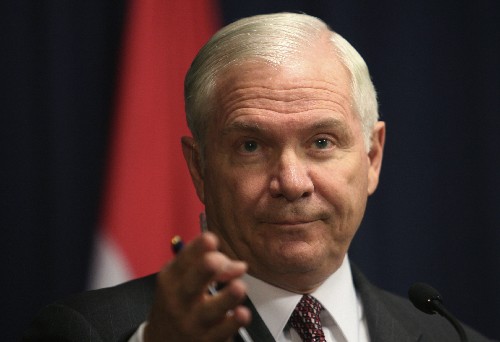
Defense Secretary Gates will be on the hill this morning testifying before the Senate Armed Services Committee on the “hard choices” ahead for the Department of Defense (DOD) spending on big weapon systems.
Gates makes a strong case in the recent issue of Foreign Affairs on the need for balance between equipping and training for big wars — to counter great power adversaries or rising challengers (like China, and perhaps Russia) — versus preparing for small wars — counterinsurgency (COIN) and stability operations. The Defense Secretary seems to be trying to split the difference in a battle that continues to be fought within DOD over whether the US military should be adapting and retraining to these new operations or stick to what the US military has historically done best. Gates writes “The key is to make sure that the strategy and risk assessment drive procurement, rather than the other way around.”
Though it could be argued that scrapping some big weapons systems could be a result of economic and budgetary realities, there also might be an effort to reallocate some of that money to developing and institutionalizing these small war capabilities. Congress needs to take a hard look at these questions to determine whether having these capacities would simply make the US more prepared or increase the likelihood of engaging future conflicts with the belief that new COIN. There is some skepticism within the US military and analysts on the lessons we have learned from Iraq and Afghanistan.
Moreover, military operations are one thing but the nation-building acumen we believed we developed has been severely tested (and possibly discredited) in Afghanistan where we have arguably conflated state-building with nation-making, two very different tasks.
Specific to the focus of Gates’s testimony today on big weapons systems, it would be interesting for members to raise some important questions:
- First, if big weapons systems and defense procurement are the problem in the inflated DOD budget, then why does Gates support the Reliable Replacement Warhead (RRW) program which Congress has repeatedly rejected in the past for being a wasteful and dangerous attempt to refine mini-nukes and bunker busters? Perhaps there is a role for the RRW if it can allow the military and thus the US to sign on to the Comprehensive Test Ban Treaty, but he needs to explain this.
- Second, big weapons systems may not be useful in fighting small wars but do they not constitute the backbone of the US securing the commons and patrolling the sea lanes that prevent small wars from erupting in the first place? What happens as regional powers begin stepping up naval deployments due to a perceived US naval vacuum between the eastern coast of Africa and the Indian ocean where piracy is on the rise – does that not raise the spectre of regional conflict?
- Third, if the crux of the US’s future small wars strategy is training and equipping and “building the capacity of local security forces to do the dissuading and destroying” what then is the risk of blowback or the guns turning on us down the road if the local security forces allegiances shift?
- Fourth, while striking some of the big ticket items on the DOD budget might appear to take on some service branch interests, the bigger target is the defense industry and Congressional district interests. The savvy defense industry has learned to spread the development and construction of big weapons systems across the 50 states to ensure maximum political stakeholders and support. The question armed services committee members might want to ask is whether Gates, the DOD, and the Obama administration have suited up for this necessary fight which is much bigger than meets the eye.
These questions need to be asked not as blunt political instruments but for serious engagement on the future of the US military with one of the most thougtful and seasoned veterans of the US national security establishment.
— Sameer Lalwani


8 comments on “Questions for Secretary Gates”